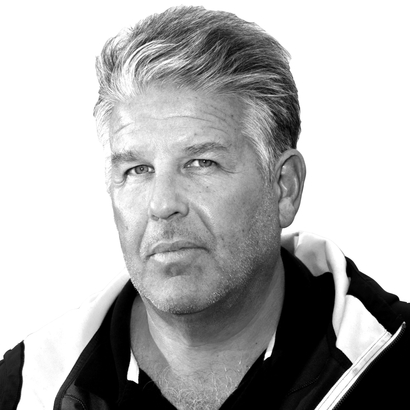Bored rich men do a lot of strange things with their money. One particular folly they’ve been indulging in for generations is building private golf clubs.
Sometimes there’s a clear reason for starting a club, and it works out well. For example, 30 years ago, longtime Wall Street executive Ed Hajim got so fed up with being denied admission to the old-line, 102-year-old Sankaty Head Golf Club, on the eastern edge of Nantucket, that he and his wealthy friends decided to build a rival club around the corner.
For the new Nantucket Golf Club, Hajim corralled golf-course designer Fred Green, and together they negotiated with the Tristram Coffin family, the descendants of one of the earliest white settlers of Nantucket, to buy the required 300 or so acres of raw land for $8 million.
For the next $20 million needed, to build the 18-hole golf course, its charming clubhouse, and various other facilities, Hajim enlisted a group of about 50 founding members—mostly his fellow wealthy Wall Street types—who ponied up around $200,000 each. The club opened in 1998 and continues to thrive, with an initiation fee of around $550,000 these days, plus annual dues of around $27,000.

For a more disreputable example, look no further than Donald Trump. Though he purchased most of his golf courses from other developers, he built Trump National Golf Club, in Bedminster, New Jersey, from the ground up.
He started in 2002, after purchasing the 520-acre Lamington Farm for less than $35 million, part of which was an estate once owned by car magnate John DeLorean. Trump then enlisted the celebrated golf-course designer Tom Fazio and his son to design two 18-hole golf courses, the first of which opened in 2004. The initial membership fee is $125,000, according to The Wall Street Journal (cheap by Trump standards—Mar-a-Lago costs $1 million to join), but it comes with some perks that other clubs can’t offer: Ivana Trump was buried there in 2022.
Lately, though, there’s a rash of billionaires breaking ground on new golf clubs for reasons that seem to defy economic logic and environmental sanity. It seems they are so rich that they are willing to spend whatever it takes to build their dream playgrounds, and it’s less important, in many cases, whether the new enterprise makes money or not.
“Many are ‘financed’ by wealthy people who want to do something great, and know how to work the system to get tax breaks etc. from localities eager to have a great project providing jobs and tourism [dollars] in their backyard,” Tom Doak, the great golf-course architect, wrote on Golf Club Atlas, a popular blog, last year.
For instance, Mike Arougheti, the billionaire C.E.O. of Ares Management Corporation, the Los Angeles–based alternative-asset manager, is said to be putting up the money for the Fall Line, in Mauk, Georgia, which one golf-industry rag described as being “a private and rather isolated resort almost equidistant between Atlanta and Montgomery, Alabama, with no easy route from either.”
Last year, more than 25 new golf courses were opened around the country, the most in the past decade. Many of these were add-ons to existing resorts or in remote private locations, such as Mauk. Land and building costs have become too pricey to justify the construction of new golf courses and clubs in Metropolitan areas, according to the National Golf Foundation, but in remote locations like Mauk, there’s plenty of room and the costs are often low.
The Fall Line will have two 18-hole golf courses, East and West, plus a 12-hole “short course,” a putting green modeled on one at St. Andrews, in Scotland, and a shooting club with a robust lodge and clays. “One course takes inspiration from the Australian sand belt with its razor edged bunker lips while the other will take on an English heathland style,” according to Chris Mavros, who writes a golf blog, Golfadelphia.
Arougheti, who is also a part owner of the Baltimore Orioles (along with fellow billionaire and non-golfer David Rubenstein), will cap membership at his club at 100 people. The Fall Line and other new courses are being “funded by guys with so much money that [the courses] don’t really need to be successful,” Doak wrote on Golf Club Atlas. (Arougheti did not respond to our request for comment.)
Ground zero of golf madness is almost certainly Florida, which has more courses than any other state in the country by far, with nearly 1,200. Between the warm, humid weather; the flat, sandy terrain; and the abundance of wealthy retirees with plenty of time and money on their hands, the state is incredibly attractive to developers. It doesn’t hurt that the rich are flocking there in droves, thanks in part to the fact that there’s no state income tax.
According to the Palm Beach Business Development Board, hundreds of asset-management firms have opened offices in Palm Beach County in the last five years, including Goldman Sachs and BlackRock, and hedge funds such as Ken Griffin’s Citadel, Paul Singer’s Elliott Investment Management, and Steven Cohen’s Point72 Asset Management. It’s now referred to colloquially as “Wall Street South.” An estimated 65 billionaires have homes in Palm Beach County, which reportedly has more private golf courses than any other county in America.
Michael Pascucci, an octogenarian near billionaire who made his fortune in the auto-leasing business, has teamed up with Stephen Ross, the billionaire real-estate developer and owner of the Miami Dolphins, to create Apogee Golf Club, some 30 minutes northwest of Palm Beach International Airport.
Apogee will be just due west of Jupiter, where Pascucci partnered with legendary golfer Jack Nicklaus to create the Bear’s Club, another golf-and-real-estate development. (Pascucci is also the man behind Sebonack Golf Club, in Southampton, New York, for which he also partnered with Nicklaus and completed in 2006.)

Apogee is meant to be Pascucci’s legacy project. At 88 years old, he’s going big, with the help of his slightly younger partner (Ross is 85) and several of his sons. Pascucci decided he wanted Apogee to be pure golf, without a residential component. “I wanted to do this without homes,” he said in an interview. Perhaps this decision was informed by the fact that he’s in the sixth year of a lawsuit with a homeowner at the Bear’s Club. Legal fees so far have exceeded $2.5 million.
At Apogee, Pascucci is working with 1,220 acres, and when fully completed, in the next year or so, the club will have three 18-hole golf courses, each designed by a different architect and espousing its own style of play. There will also be a fourth, 12-hole, par-4 course, where all you will need is a driver and a putter.
“All you see, basically, is palm trees and golf holes,” Pascucci said. Apogee also has two elaborate practice facilities and two clubhouses, for which Ross will handle the development, as well as golf villas, where golfers can stay overnight, or longer, before hitting the links again the next day. “This is for a person that wants all the golf they could possibly need,” Pascucci said.
None of this comes cheaply, naturally. Pascucci and Ross are circling an investment in Apogee of more than $500 million. Founding members include billionaire hedge-fund manager Stanley Druckenmiller, billionaire former Richemont C.E.O. Johann Rupert, and the Canadian billionaire Paul Desmarais Jr., all of whom paid $1.5 million in the form of a zero-coupon bond. Non-founding members will pay a membership fee of around $500,000 to join.
Apogee’s membership will comprise half “local” members and half “national” members—some 800 in total—so that the various courses don’t feel overcrowded. “I just told Ross,” Pascucci said, “‘Look, you’re not doing this for money. You got enough money. Let’s just do pure golf—Golf Mecca. I don’t believe anybody’s created what we’ve done.’”
One Apogee member says that these new courses are pretty much in the middle of nowhere, built by people who have so much money they don’t know what to do with it. “You get to invite your friends down and you’re a big deal,” he says. (This member also says he once considered buying an island off the coast of Georgia to build a golf resort with Davis Love III, the golf pro, but it didn’t pan out.)
Five minutes away from Apogee, the ubiquitous billionaire developer Mike Meldman has broken ground on Atlantic Fields, a 1,500-acre residential development that, like Meldman’s other projects around the world, will also include an 18-hole Tom Fazio–designed golf course. In addition, there will be a 10-hole “short” course and a “revolutionary” golf-performance center. “I told Mike he owes me two dinners because he’s building five minutes away,” Pascucci said.
The difference between Apogee and Atlantic Fields is that Meldman is selling home lots for at least $6 million each, so buyers have to build a house in order to join the club. “In between the homeowner’s fees and the dues and stuff that’ll cost you $400,000 a year to be there,” Pascucci said. “A lot of people at Apogee don’t want that. You just fly in and out, and you stay in the villa for four days, and you’re gone.”

Chris Shumway, the hedge-fund manager and founder of Shumway Capital, is also getting into the golf-course-development game in Florida. Nearly a scratch golfer, Shumway is building Rolling Sands, an 18-hole course on 240 acres, on a former phosphate-mining site in Martin County. Like Apogee, Rolling Sands will be golf-only, except for one 20-acre residential-home site—presumably for Shumway—and a clubhouse.
Another big development that has golf lovers in Florida talking is Ken Bakst’s Ranch, a nearly 4,000-acre residential-and-golfing development, 10 miles west of Hobe Sound, that used to be a cattle ranch. Bakst, the developer behind Friar’s Head, on Long Island—one of the top 15 golf courses in the country—is planning two 18-hole golf courses, 175 homes, and a working cattle ranch. Some 91 percent of the property will remain as open space to preserve the “ranch” gestalt.
There’s also Swiss entrepreneur Dominik Senn’s Panther National, a 400-acre golf club in Palm Beach Gardens, on what’s reputed to be the last buildable stretch of land—for this use, anyway—in all of Palm Beach, Broward, and Miami-Dade Counties. Senn has raised more than $250 million to build Panther National.
“When I do something in my life, I do it to the extreme,” Senn explains in the club’s brochure. The club’s membership is “invitation only,” it boasts on its Web site, and the course was designed by Nicklaus and pro golfer Justin Thomas. There’s room for 64 large, wildly modern homes in the development as well. All of this new golf-related housing construction will “really test the South Florida supply and demand,” says National Golf Foundation C.E.O. Greg Nathan.
Unsurprisingly, golf courses are also natural-resource hogs, making many environmentalists crazy. The United States’ 16,000 or so golf courses consume more than 2 billion gallons of water a day, according to Inside Science magazine. Then there are the chemicals and pesticides used to maintain all those pristine fairways and greens. You don’t think Augusta National looks the way it does every April by coincidence, do you?
“Golf courses represent a luxurious use of land that the planet can no longer sustain,” according to Prospect magazine. To gauge whether the new golf courses being built in Florida are upsetting state environmentalists, I reached out to the Institute for Regional Conservation, in Delray Beach, the Florida Department of Environmental Conservation, in West Palm Beach, and the Business Development Board of Palm Beach County. None of them responded.
Entrepreneur Corbin Cowan, who is now into crypto, has launched something called the Albatross Golf Society. Albatross isn’t a golf club, per se, but rather is “a society built for those who play to conquer, both in business and on the course.”

The idea behind Albatross, a golf term for a shot that’s three under par, is that the members get access to five or so golf tournaments a year at other clubs, where they play against other amateurs and well-known athletes such as Tom Brady and John Daly. The winner walks off with a grand prize of around $75,000, which can be taken in cash—making the winner a professional instantly—or, if the player prefers to remain an amateur, the prize money can be donated to a charity of his or her choice, or it can be turned into Albatross credits. Albatross did one outing at Pascucci’s Bear’s Club. The next outing, at the end of this month, is in Anguilla at the Aurora Anguilla Resort & Golf Club.
Admittedly Albatross operates at a very different price point than does Apogee or the Fall Line (not even close)—$8,500 for a “premier” membership and $3,500 for a “clubhouse pass.” But the premier membership promises a “gateway to elite competition, world-class networking, and access to the most exclusive golf and sporting experiences.” The memberships are “designed for those who compete at the highest level—on and off the course.”
It’s all enough to make you wonder why there are so many new, exclusive golf clubs, when it seems like there are more than enough to go around already. But, like owning a yacht, a G7, or a Rothko, building a golf course that only you and your other rich friends can use isn’t so much a matter of convenience or rationality as it is a way of conveying to your buddies a sense of extreme wealth and power. How great is that?
“It’s all about controlling the number of people who have access to maintain the quality of the experience,” Nathan explains. “That’s the funny thing about golf. Every golfer’s dream is to be on this amazing piece of land, on this perfectly manicured golf course. And to be out there alone with their group.”
William D. Cohan is a Writer at Large at AIR MAIL and the author of such best-selling books as The Last Tycoons, House of Cards, and The Price of Silence. He is a founding partner of Puck. His latest book, Power Failure, is out now


